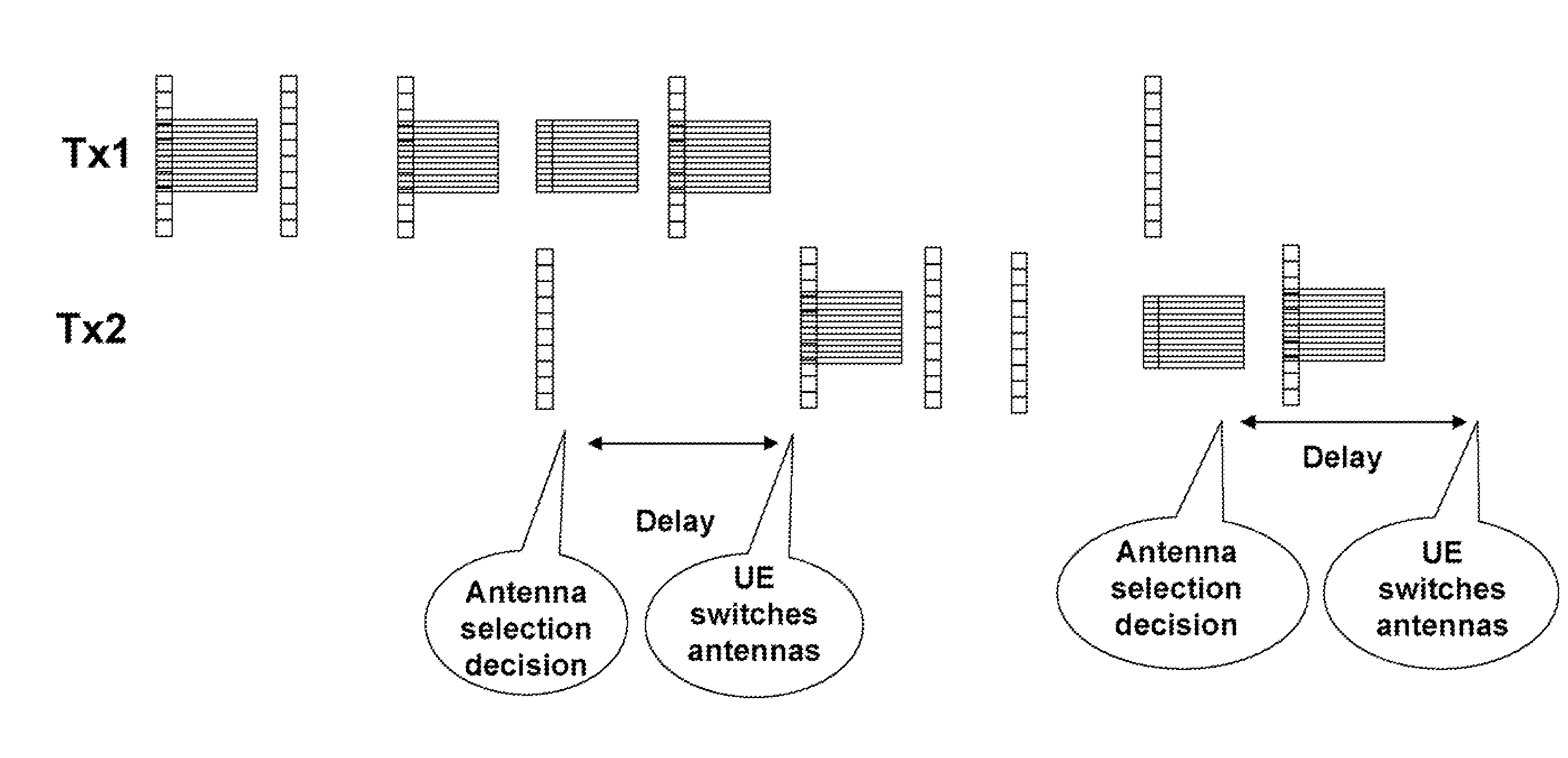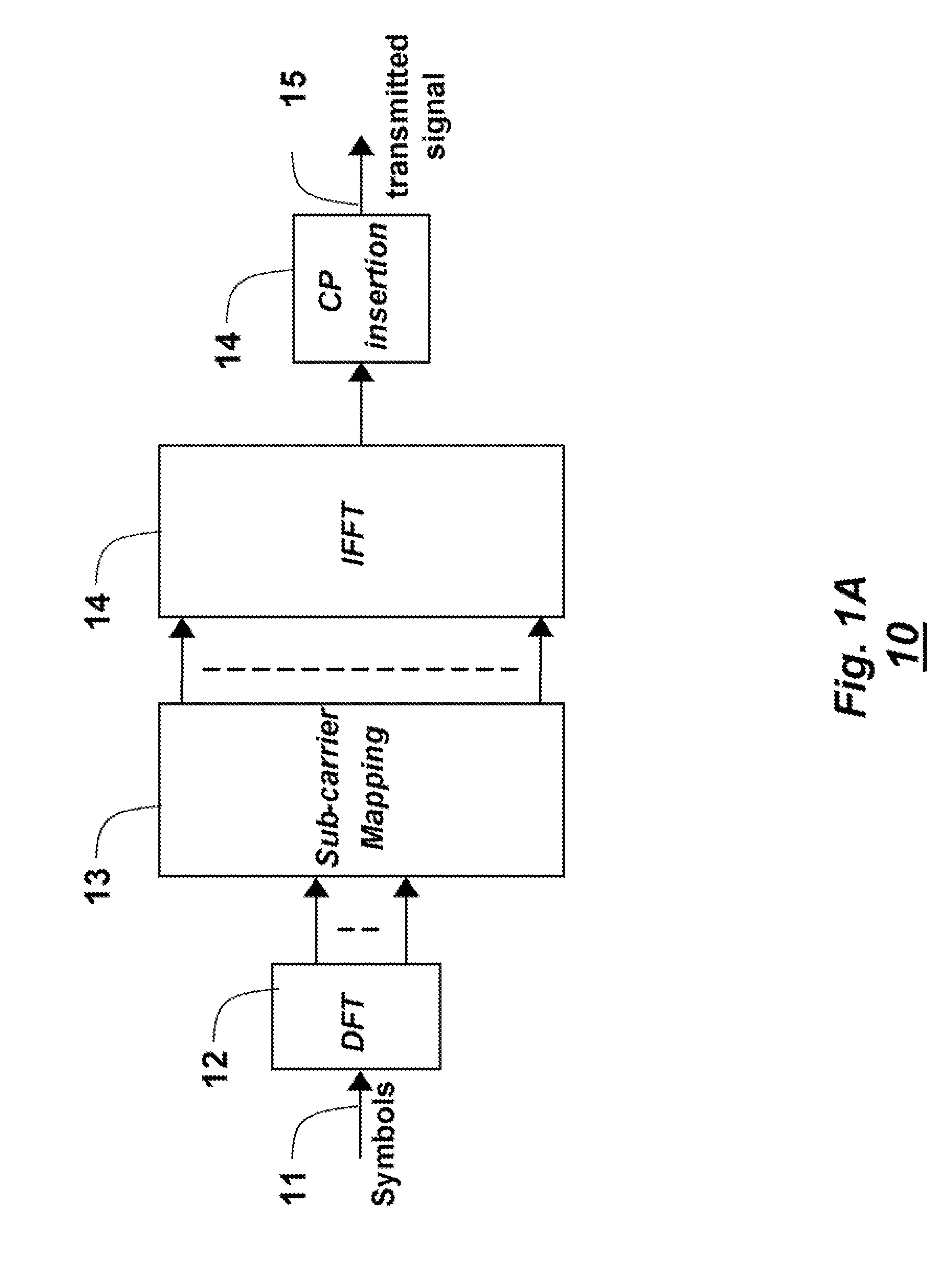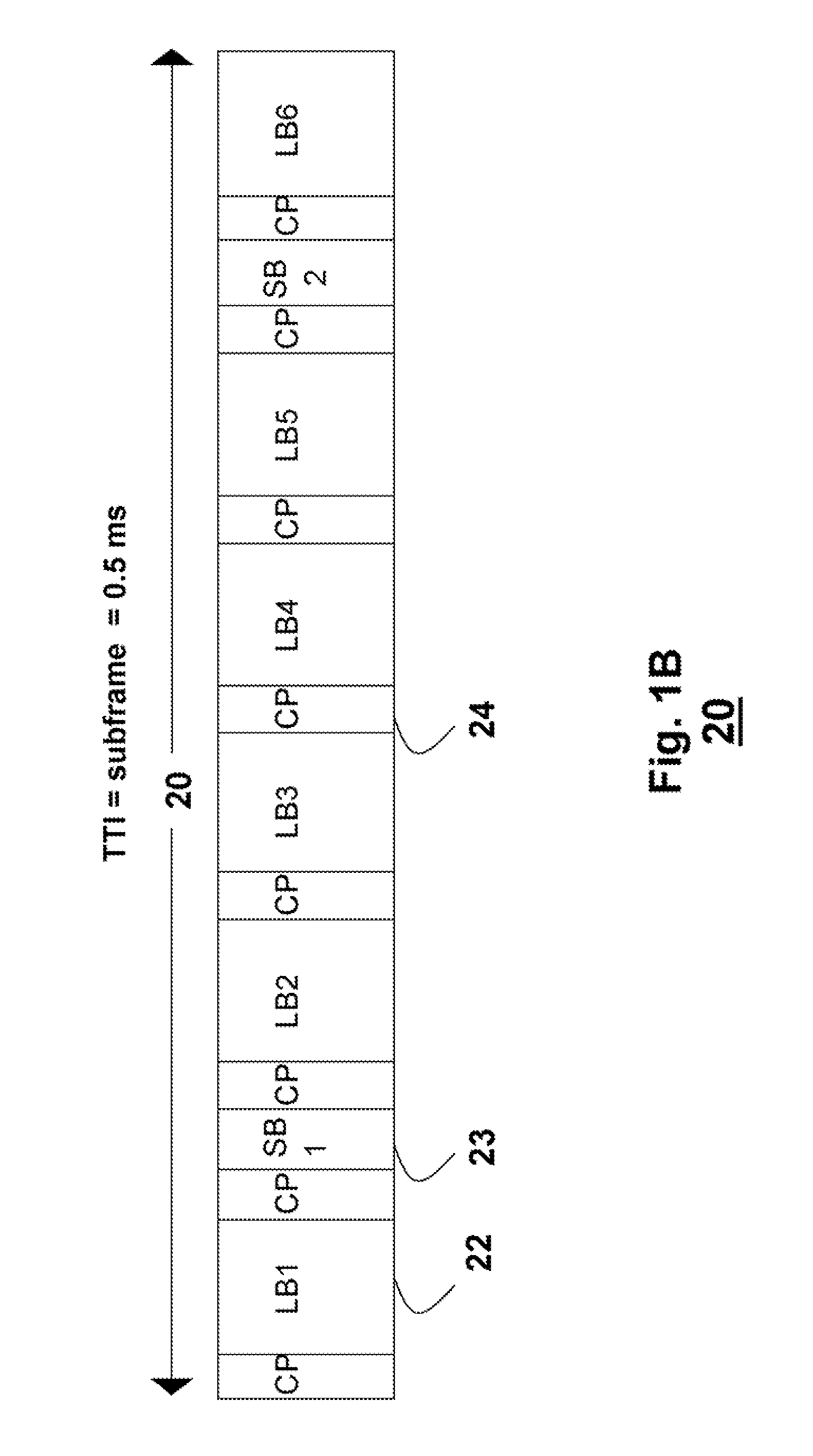Method and System for Generating Antenna Selection Signals in Wireless Networks
a technology of wireless communication network and antenna selection, applied in the field of generating antenna selection signals in wireless communication network, can solve the problems of increasing complexity, power consumption and component size of transceivers, increasing hardware and signal processing complexity, and antennas are relatively simpl
- Summary
- Abstract
- Description
- Claims
- Application Information
AI Technical Summary
Benefits of technology
Problems solved by technology
Method used
Image
Examples
Embodiment Construction
[0041]The embodiments of the invention provide a method and system for generating and transmitting antenna selection signals selection in wireless networks. More specifically, the invention can be used in transceivers where the number of RF chains is less than the number of antennas, e.g., one transmit RF chains for two transmit antennas, or two transmit RF chains for four transmit antennas. It should be understood that the receive antennas can also be coupled to correspondingly fewer receive RF chains. It should be noted that the techniques described herein can work with receivers that have only a single antenna. The invention is applicable to networks designed according to 3GPP, 4G cellular, WLAN, WiBro, WiMAX, and IEEE 802.20 standards.
[0042]FIG. 1A shows a portion of a transmit RF chain 10 for a discrete Fourier transform (DFT)-spread OFDM transceiver used by the embodiments of the invention. Symbols 11 are encoded using a DFT 12, followed by sub-carrier mapping 13, and an inver...
PUM
 Login to View More
Login to View More Abstract
Description
Claims
Application Information
 Login to View More
Login to View More - R&D
- Intellectual Property
- Life Sciences
- Materials
- Tech Scout
- Unparalleled Data Quality
- Higher Quality Content
- 60% Fewer Hallucinations
Browse by: Latest US Patents, China's latest patents, Technical Efficacy Thesaurus, Application Domain, Technology Topic, Popular Technical Reports.
© 2025 PatSnap. All rights reserved.Legal|Privacy policy|Modern Slavery Act Transparency Statement|Sitemap|About US| Contact US: help@patsnap.com



